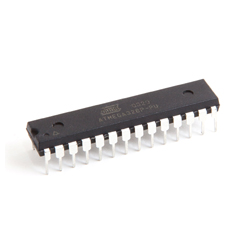A microcontroller is an integrated chip that is often part of an embedded system. The microcontroller includes a CPU, RAM, ROM, I/O ports, and timers like a standard computer, but because they are designed to execute only a single specific task to control a single system, they are much smaller and simplified so that they can include all the functions required on a single chip.
A microcontroller differs from a microprocessor, which is a general-purpose chip that is used to create a multi-function computer or device and requires multiple chips to handle various tasks. A microcontroller is meant to be more self-contained and independent, and functions as a tiny, dedicated computer.
The great advantage of microcontrollers, as opposed to using larger microprocessors, is that the parts-count and design costs of the item being controlled can be kept to a minimum. They are typically designed using CMOS (complementary metal oxide semiconductor) technology, an efficient fabrication technique that uses less power and is more immune to power spikes than other techniques.
There are also multiple architectures used, but the predominant architecture is CISC (Complex Instruction Set Computer), which allows the microcontroller to contain multiple control instructions that can be executed with a single macro instruction. Some use a RISC (Reduced Instruction Set Computer) architecture, which implements fewer instructions, but delivers greater simplicity and lower power consumption.

Tidak ada komentar:
Posting Komentar